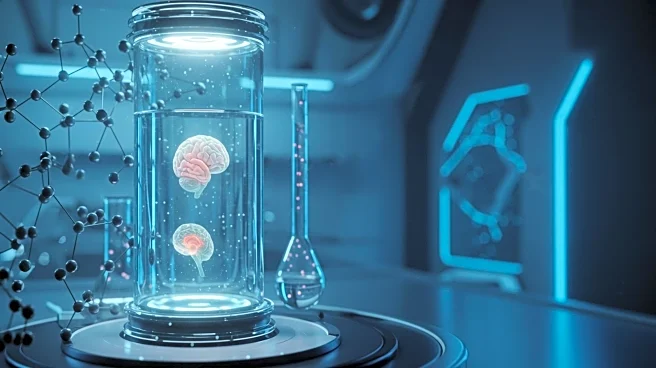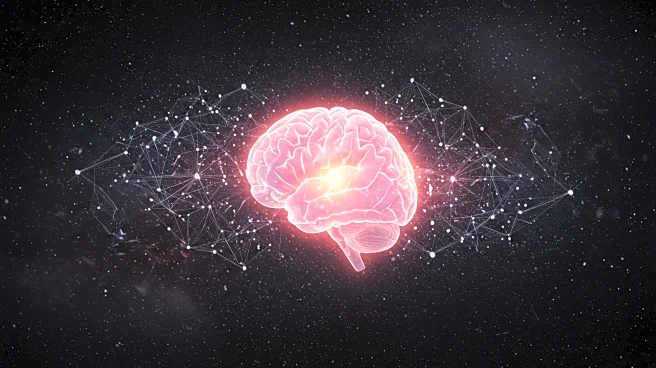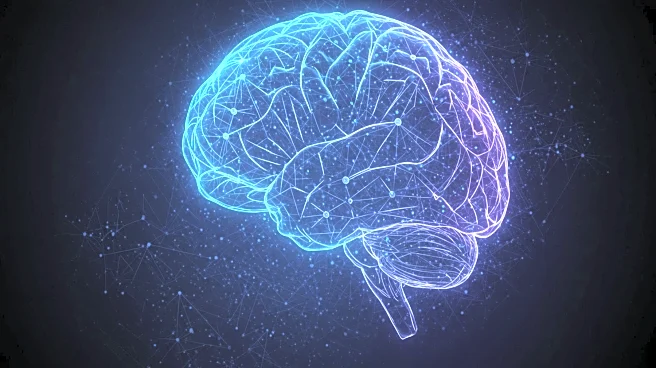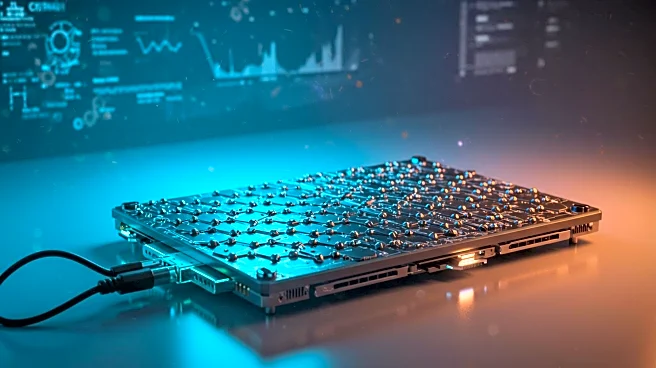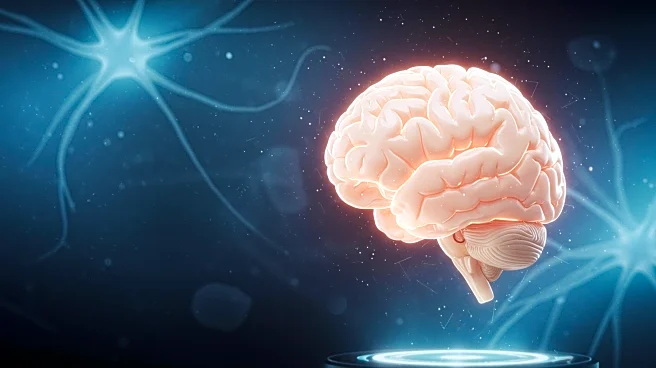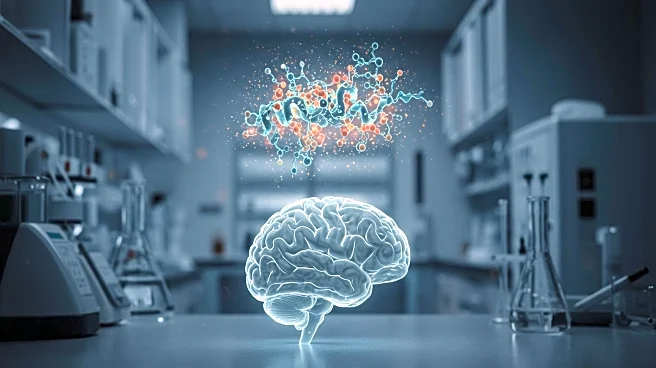What's Happening?
Researchers at the University of California San Diego, in collaboration with NeurANO Bioscience and Nanotools Bioscience, have developed a novel method to accelerate the growth of human brain organoids using graphene. This method, known as Graphene-Mediated Optical Stimulation (GraMOS), is a non-genetic, biocompatible technique that uses graphene's optoelectronic properties to convert light into electrical cues, promoting neural activity and maturation. This advancement is significant for modeling age-related neurological conditions such as Alzheimer’s disease. The method allows for the rapid development of brain organoids, which are three-dimensional models derived from stem cells, without the need for genetic modification or direct electrical currents, which can damage neurons.
Why It's Important?
The development of GraMOS represents a significant breakthrough in neuroscience and neuroengineering. By expediting the maturation of brain organoids, researchers can study neurological diseases more effectively and in a shorter timeframe. This method enhances the modeling of diseases like Alzheimer’s, providing insights into disease progression and potential treatments. Additionally, the ability to link graphene-stimulated organoids to robotic systems opens new avenues for brain-machine interfaces, potentially leading to advanced prosthetics and adaptive interfaces. The safe and biocompatible nature of graphene ensures that neurons and organoid structures remain unharmed, making this a promising tool for both fundamental neuroscience research and translational studies.
What's Next?
The successful integration of graphene-stimulated brain organoids with robotic systems suggests future possibilities for neuro-biohybrid systems, where living neural tissue and robotics collaborate. This could lead to advancements in prosthetics, adaptive interfaces, and even new forms of computation. Researchers aim to explore further applications of this technology in tissue engineering and artificial intelligence, leveraging the brain's adaptability to enhance machine learning and problem-solving capabilities. The ongoing research may redefine the potential of neuroscience and open new technological paradigms.
Beyond the Headlines
The use of graphene in neuroengineering not only accelerates brain organoid development but also offers a noninvasive method to stimulate other lab-grown tissues. This could revolutionize tissue engineering by providing precise control over tissue growth and development. Furthermore, the integration of living neural networks with machines could lead to breakthroughs in AI, enhancing the ability of systems to adapt and learn from their environment. This interdisciplinary approach may pave the way for innovative solutions in both medical and technological fields.



